This article needs additional citations for verification .(July 2024) |
| |||
|---|---|---|---|
| Buildings and structures +... |
| 1500s .1510s in architecture. 1520s |
| Architecture timeline |
This article needs additional citations for verification .(July 2024) |
| |||
|---|---|---|---|
| Buildings and structures +... |
| 1500s .1510s in architecture. 1520s |
| Architecture timeline |

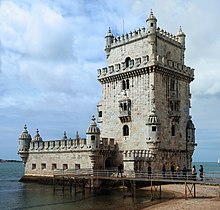

The 16th century began with the Julian year 1501 and ended with either the Julian or the Gregorian year 1600 (MDC), depending on the reckoning used.

Antonio Allegri da Correggio, usually known as just Correggio was an Italian Renaissance painter who was the foremost painter of the Parma school of the High Renaissance, who was responsible for some of the most vigorous and sensuous works of the sixteenth century. In his use of dynamic composition, illusionistic perspective and dramatic foreshortening, Correggio prefigured the Baroque art of the seventeenth century and the Rococo art of the eighteenth century. He is considered a master of chiaroscuro.
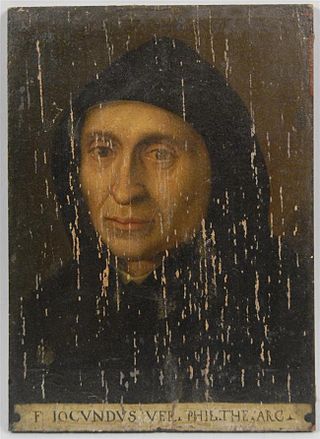
Giovanni Giocondo, Order of Friars Minor, was an Italian friar, architect, antiquary, archaeologist, and classical scholar.

Altobello Melone was an Italian painter of the Renaissance.
The decade of the 1510s in music involved some significant events.
The decade of the 1460s in art involved some significant events.
The decade of the 1440s in art involved some significant events.
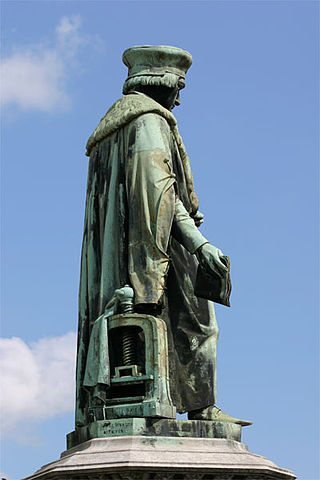
Dirk Martens was a printer and editor in the County of Flanders. He published over fifty books by Erasmus and the very first edition of Thomas More's Utopia. He was the first to print Greek and Hebrew characters in the Netherlands. In 1856 a statue of Martens was erected on the main square of the town of his birth, Aalst.
Events from the 1510s in England.
Events from the year 1584 in art.

Andrea del Sarto was an Italian painter from Florence, whose career flourished during the High Renaissance and early Mannerism. He was known as an outstanding fresco decorator, painter of altar-pieces, portraitist, draughtsman, and colorist. Although highly regarded during his lifetime as an artist senza errori, his renown was eclipsed after his death by that of his contemporaries Leonardo da Vinci, Michelangelo, and Raphael.
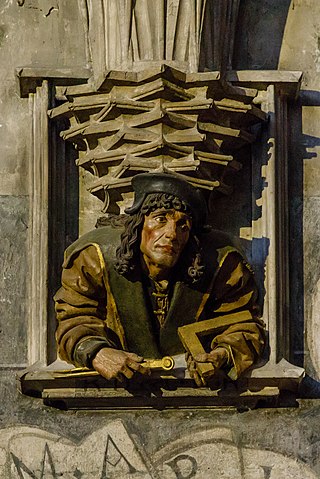
Anton Pilgram was a late medieval Moravian and subsequently Austrian architect and sculptor active in the area of today's Czech Republic (Moravia), Austria and western (Germany) Swabia. Pilgram is known as the sculptor of the portal of Old City Hall and St. James church in Brno and craftsman of the pulpit in St. Stephen's Cathedral, Vienna. He spent a major part of his life in Brno, Moravia.
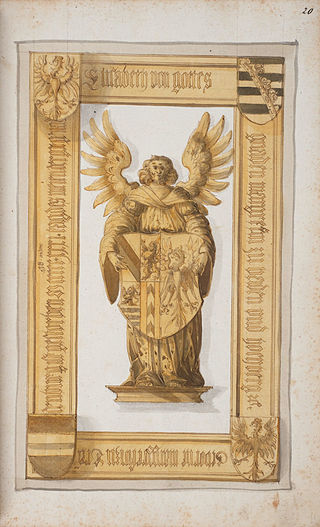
Elizabeth of Brandenburg-Ansbach-Kulmbach was a princess of Brandenburg-Ansbach by birth and by marriage Margravine of Baden.
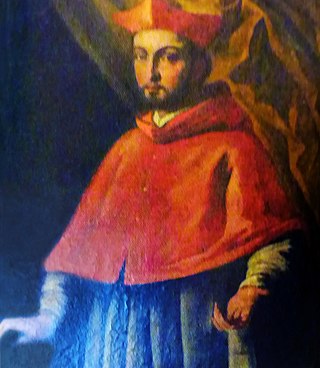
Luigi d'Aragona (1474–1519) was an Italian Roman Catholic cardinal. He had a highly successful career in the church, but his memory is affected by the allegation that he ordered the murder of his own sister and two of her children.
René de Prie (1451–1519) was a French Roman Catholic bishop and cardinal.
Events from the 1510s in Denmark.